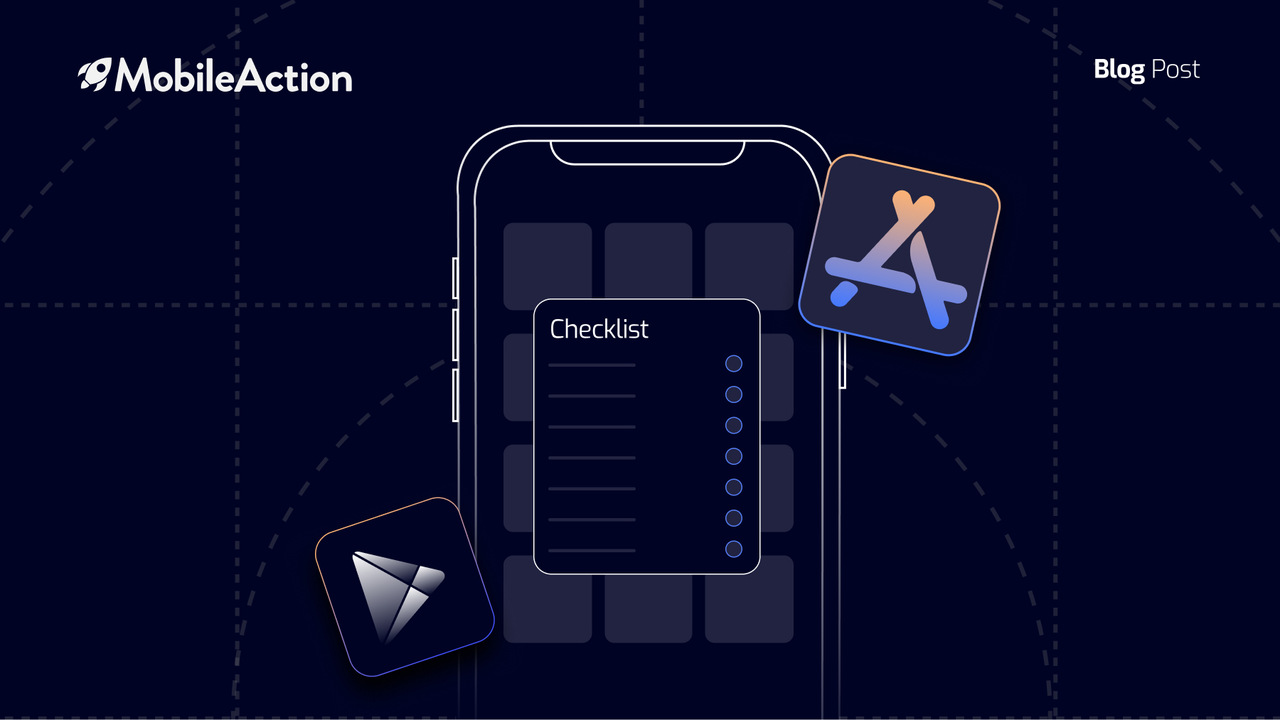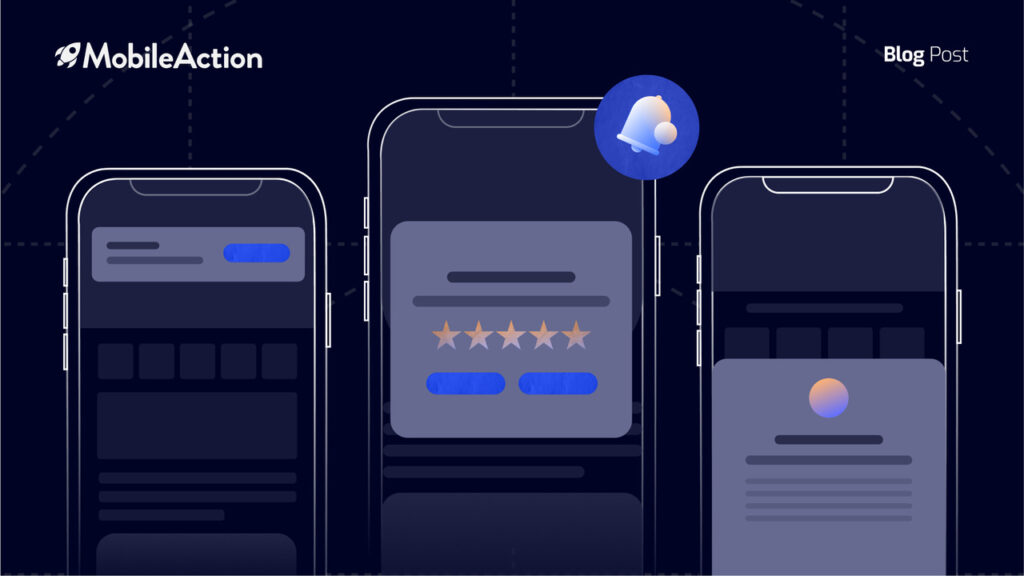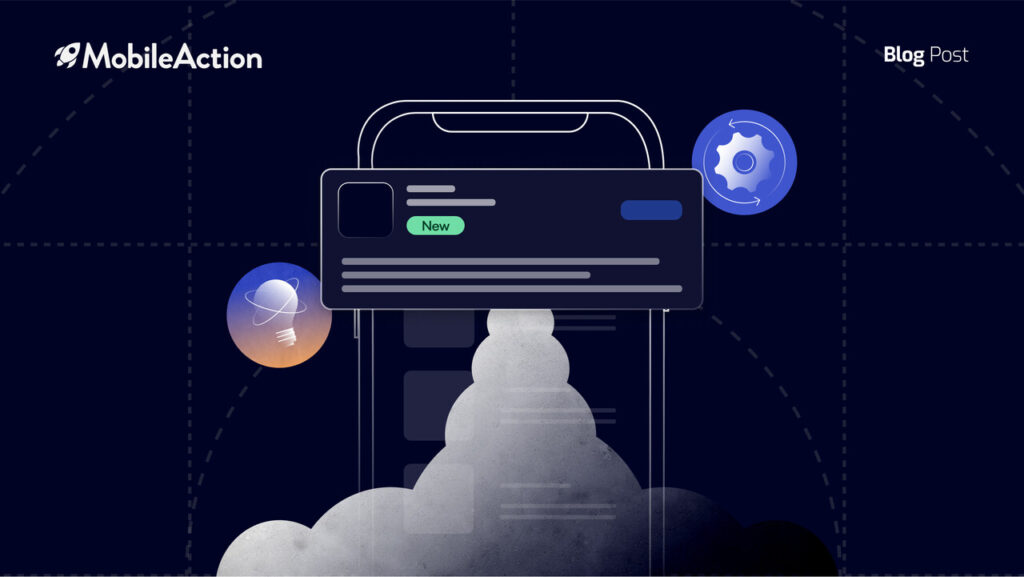There are countless guides and articles revolving around how to do ASO (App Store Optimization), including our own blog. However, things can get quite mixed up when there are too many resources that all provide scattered information.
To make things easier, we have prepared this Complete ASO Checklist so you can follow the necessary steps whilst doing ASO.
Let’s get a couple of things straight before we get started.
This is not an ASO guide; you can see our comprehensive ASO guide right here. This article is designed to provide you with an easy-to-follow checklist while applying the knowledge you’ve learned from our guides.
For further information:
- Google Play ASO (App Store Optimization): The Definitive Guide
- ASO for iOS: The Ultimate Guide to Mastering the Apple App Store
The complete ASO checklist for a successful app
Our ASO Checklist revolves around telling you each step you should take while engaging in App Store Optimization.
We’ve prepared a detailed breakdown of each step and the actions required for those steps.
Without losing much time, let’s begin with the steps required to have a solid ASO (App Store Optimization) strategy.
The first place to start doing ASO is by looking at your app.
Knowing how your app is performing and identifying any low-hanging fruits are crucial to its success.
1. Do you know where you rank?
If you have no idea where you are located in your app category and how your place has changed over time, there’s no point in blindly trying to do competitor research. To start doing ASO, you must know ‘where you stand.’
You can use the App Analysis and ASO analysis tools to see where you stand regarding keywords and visibility. You can also take a glance at your ratings and reviews. Ensure you are using app store optimization services to see the metrics around your keywords’ results. This way, you won’t have to guess which word is bringing in the downloads and which is not. Once you know where you are, you can devise a strategy to reach where you want to be.
To find out where you stand, you should check your Category Rankings to see where you belong. After you know your footing, you can start planning your future strategy.
2. Do you know which keywords you rank for?
Before finding new keywords and spying on your competitors, you should check which keywords you rank for and in what place in those rankings are. You should carefully pick the low-performing ones and list which ones you want to replace.
Along the life-cycle of your app, you should regularly monitor your keyword rankings and apply a method we call the “keyword optimization cycle”.
Monitoring your keywords, identifying the high and low-performing ones, discovering new keywords, and updating your keyword list with the new promising ones is what this cycle consists of.
For the best practices for keyword optimization, we highly recommend looking at the App Store Keyword Optimization blog post.
3. Do you know which keywords your competitors rank for & get downloads from?
If you have more or less a general idea about your app’s keyword rankings, then the next place you should look at is your competitor’s keywords and do a mobile app competitor analysis.
Since app markets are extremely competitive, your app should rank for keywords that your competitor apps are ranking for. This is where your app should sneak into the top results for search queries.
Also, getting downloads from a keyword is a good indicator of high performance for that particular keyword. Targeting downloads and bringing keywords of your competitors is also a good start to rank higher.
4. Do you track your competitor’s updates?
Users’ preferences over the apps that perform the same task are highly differential today, and they are very good at catching up with the new functionalities.
To retain your existing users or gain new users regularly, you have to track the updates and new functionalities your competitors bring into your specific type of service. In that regard, following your competitors’ App Update Timelines will help you realize how they develop their service, UI, and creatives.
At MobileAction, we gather all the information through any app’s update timeline. Check out our How to Use App Update Timeline post to learn more about it.
5. Do you know all of your competitors?
Sometimes, taking a step back and scanning your environment is a wise decision to spot the competitors you might have not noticed before.
Most of the apps are cross-functional now and might be competing in tracks similar to yours, if not completely the same. However, this will still create some area for them to convert users.
Spotting every competitor and enlarging your playground into a broader area are necessary while doing ASO.
If you are having trouble identifying more competitors to your app, you can check out our post on how to find your competitors with ASO.
6. Do you measure the performance of your efforts?
In today’s conditions, App Store Optimization is solely a data-backed process, as our CEO Aykut Karaalioglu explains. Therefore, some inputs into the process are your tweaks, updates, and targetings.
Naturally, this process’s outputs are the reflections of your efforts on your rankings.
Measuring your rankings & downloads is the biggest performance indicating metrics of your ASO efforts. Therefore, you should be tracking all your tweaks in a historical fashion, in which you list down all of your tweaks, track them in short-to-medium-term periods, and measure their performance with their effects on your rankings and download numbers.

7. Are you using MobileAction to track analytics?
No matter how perfect you get your ASO on the first round, you must continue updating your keywords, title, and screenshots. You should ensure that you are tracking keywords and following along with the keyword trends!
You can track your keywords and your competitors and even receive suggested keywords with our app store optimization tools.
App Store keyword optimization is not the end either! You will be able to see your competitors’ other updates as well. When did they last update their app? What changed? How did this affect their ratings and reviews? You should be asking yourself questions like these.
8. There is also the matter of localization.
Localization is a must for ASO. Not only do you need to translate your screenshots and description, but your keywords will be changing, too.
MobileAction’s Localization tool can be very useful when browsing competitors and keywords are localized from another region.
Make sure you are checking competitors and testing for this as well. Localization is not translation alone! Different regions will use different keywords in their searches!
If you’ve got 8 ticks now, let’s dive into Optimization!
These 8 checkpoints are the main stations directing your ASO efforts into a successful track.
If you’re comfortable with them, now it is time to spark off the growth machine and carry your app into the positions it deserves!
One more time, it is all about knowing where you stand while doing ASO, and it will determine where to be headed in a crystal clear picture.
Now you have your ASO checklist, you are armed with the tools you need to get out there and start that App Store Optimization! If you want more tips, tricks, or access to our ASO, sign up for a demo today!





